Illinois Issues: Historic Dilemma
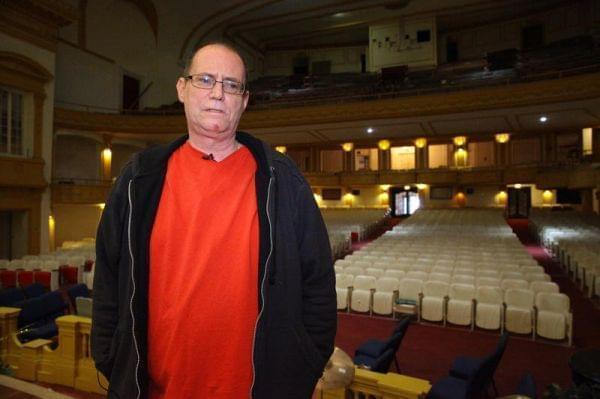
George Sherman was overseeing renovation of the Central Park Theatre before the city closed the building, after citing it for more than 100 code violations. John Owens/for Illinois Issues
Efforts to preserve historic buildings in low-income and inner-city neighborhoods throughout the state face challenges — like the lack of access to financing and restoration projects taking a back seat to more pressing issues in the community.
It was one of the first large movie palaces in the world and the template for hundreds of other venues like it — including the Chicago Theatre and Oriental Theatre in downtown Chicago and the Paramount Theatre in New York City.
The Central Park Theatre, in Chicago’s North Lawndale neighborhood, was built by legendary movie palace architects Rapp & Rapp for theater entrepreneurs Balaban and Katz. The building has been on the National Register of Historic Places since 1975. It was lauded for its Italian and French Renaissance-design influences and its pioneering use of air conditioning — indeed, it was the first air-conditioned theater in the world.
But the theater, which has housed a Pentecostal church since 1971, was closed by the city in 2013, after being cited for more than 100 building code violations, from roof issues to electrical problems. George Sherman, the director of operations for the church and its adjacent shelter, Hope House, says $27 million is needed to address all of the violations.
The Rev. Lincoln Scott, pastor for the House of Prayer, Church of God in Christ, which owns the venue, borrowed $349,000 from Seaway Bank in an attempt to address some of the violations. But Scott died in 2015. The church’s board was left with a loan that it can’t pay off and code violations at its historic building that it can’t address. Seaway Bank is prepared to foreclose on the property.
Meanwhile, the theater, in one of the poorest neighborhoods in the state, remains closed with few prospects.
“We want to reopen the theater and keep it as a church, because we’ve been a pillar in the community since 1971,” says the Rev. Robert Marshall, the pastor at the House of Prayer, Church of God in Christ. “But our backs are against the wall due to a lack of funding.”
It’s a dilemma that owners and caretakers of endangered historic structures in low-income and inner-city neighborhoods throughout the state of Illinois face, along with the communities where these treasures are located. On the one hand, these historic buildings still exist. But they exist in low-income communities, where funding to restore them is often nonexistent, and the interest in rehabilitating them takes a back seat to other more pressing issues.
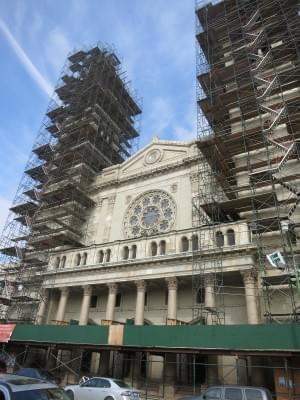
St. Adalbert's Church in Chicago
“It’s just difficult to finance the extensive rehabilitation of a building in areas where the market is terrible,” says Lisa DiChiera, the director of advocacy for Landmark Illinois, a not-for-profit statewide historic preservation agency.
DiChiera says that it’s hard to find comparable real estate sales, also known as comps, in neighborhoods with more disinvestment. “Especially for a unique building like a former school, or church — there’s no model to look to. And financing is based on comps.”
There are hundreds of endangered historic buildings throughout the state, according to Landmark Illinois, the state’s leading resource for historic preservation. A number of these buildings are located in low-income areas in Chicago, Aurora, Peoria, Joliet, Springfield and Waukegan.
The endangered buildings in low-income or inner-city locations had past lives as retail locations, churches, theaters and more. They include locations like:
St. Adalbert’s Church — A 1912 vintage house of worship in Chicago’s Pilsen neighborhood designed by noted ecclesiastical architect Henry J. Schlacks. The Archdiocese of Chicago is planning to close the church because of decreasing attendance and growing maintenance costs.
The Citizens Savings and Loan Association Building — A modernistic cylinder-styled building from 1964 in East Alton, which has been shuttered since 2008. It’s owned by the village of East Alton, which had previously indicated that it would pursue demolition of the structure, designed by Illinois architect Alvin K. Stoltze.
It’s “a spectacular building visually,’’ says Frank Butterfield, director of the Springfield office of Landmarks Illinois. The building earlier this year became eligible for designation on the National Register of Historic Places. Butterfield says that opens the possibility of a 20 percent federal tax credit for a potential developer.
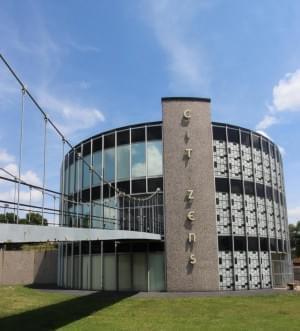
The Citizens Savings and Loan Association Building in East Alton
“We’ve shown the building twice (to potential buyers), but there was no interest,” says East Alton, Ill. Mayor Joseph Silkwood. “So we’ve had an engineer and architect come in to do an evaluation on the building to see what it will take to get it restored. Once we get a dollar figure, we’re looking to do a nationwide marketing of some kind. We don’t have a lot of money to do that, but we’ll use the different historic groups and social media to see if we can get anyone to bite.”
“This is a project where if you just want to make money, you’re not going to be interested in it,” Silkwood added. “You have to have an affinity for historic properties.”
The Lincoln Colored Home — A former home for orphaned black children, founded by African-American social reformer Eva Monroe. The building was constructed in 1904 in Springfield. This modest, red-bricked two-story structure, which had been a single-family home after the orphanage closed in 1944, has been vacant since 2005.
The Cornell Store and Flats Buildings — A rare example of commercial Prairie School architecture by Frank Lloyd Wright-protégé Walter Burley Griffin, built in 1908. City of Chicago Cultural Historian Tim Samuelson called the blonde-brick building, located in Chicago’s Grand Crossing neighborhood, one of Chicago’s 25 most important buildings and an architectural masterpiece. But the building, surrounded by blight, has not been designated as a local landmark, so it is not protected from being demolished.
“It’s in a location where the market is terrible,” DiChiera says. “I mean there is no market there. You’ve got a junkyard behind it, a junkyard across the street from it and viaduct next to it. It’s absolutely landmark eligible, but what the heck do you do with it?”
The New Regal Theater — A 1928 “atmospheric” movie palace, designed by architect John Eberson, located between the Avalon Park and South Chicago neighborhoods. It’s been shuttered since 2010. The building, designated a Chicago Landmark in 1992, needs an influx of up to $7 million before reopening to the public.
Edward and BettiAnn Gardner, multimillionaire founders of Soft Sheen Products, sank over $16 million of their own money into maintaining the building when they owned it from 1987 to 2003. During that time, they established it as an arts-and-entertainment venue, showcasing primarily R&B acts like Gladys Knight, Ray Charles, Mary J. Blige and R. Kelly.
But promoters began to look elsewhere by the mid-1990s, primarily because the theater didn't have enough seating to accommodate the major acts. 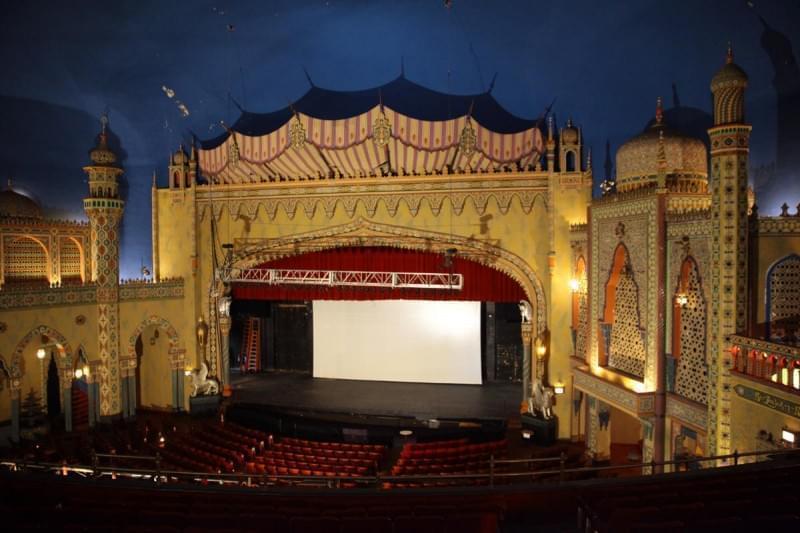
The New Regal Theater in Chicago
John Owens
The theater was also previously owned by a business headed by former Country Club Hills Police Chief Regina Evans. In 2013, Evans pleaded guilty to fraud charges after she stole nearly $1 million of state job-training grants, using much of the money to pay off personal and business debts. She lost the theater in a foreclosure. In 2014, she was sentenced to five years in prison. Some of the grant money had been intended to fund a GED preparation and apprenticeship-training program for bricklaying and electrical work. Participants in the program would have worked on renovating the Regal Theater. Evans’ husband, Ronald, also pleaded guilty to crimes associated with the scheme and was sentenced to one year in prison.
Jerald Gary, the venture capitalist who owns the New Regal Theater now, originally had plans to reopen the theater in early 2016 as an entertainment venue featuring both live acts and holograms of classic, now-deceased African-American entertainers.
Gary bought the theater two years ago, but he still is a long way from raising the capital needed to address some of the building code issues. Gary says the location of the theater hasn’t been a positive in addressing those funding issues.
“It’s more challenging due to the perceived investment risk of the area,” Gary says. “It’s sort of a self-realization of disinvestment in the community.”
What makes things even more challenging for those looking to rehabilitate these classic structures in low-income neighborhoods is the lack of public money available for these projects, which has been exacerbated in the past year because of the state budget stalemate.
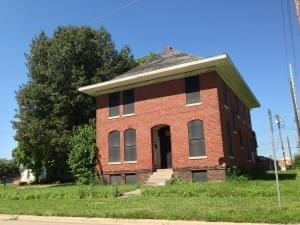
The Lincoln Colored Home in Springfield
Supporters of the Illinois Historic Preservation Tax Credit Program say it is by far the best incentive that the Illinois has for those looking to rehabilitate historic structures. The program, which was enacted in 2012, provides a state income tax credit equal to up to 25 percent of a project’s qualified expenditures for historic renovations or rehabilitation.
But it benefits a limited number of municipalities. The credit is only available in the so-called River Edge Redevelopment Zone, which consists of five cities along rivers in the state — Aurora, Elgin, Rockford, East St. Louis and Peoria.
The program is also set to expire in December 2016. A bipartisan group of legislators is backing Senate Bill 1642, which would extend the program until January 2022. But the measure failed to make it to a floor vote in the spring legislative session.
“This is a really important extra layer of financing,” DiChiera says. “But it was only given a window of five years, and now we’re at the end of the five years. Unfortunately some of these communities weren’t ready from a market standpoint to get these projects picked up after the financial crash until three or four years into the program.”
DiChiera says her organization’s goal is ultimately to get a statewide credit in place. “All the states around us have this, but we know that now is not the time to push that due to the budget impasse. So the important thing is to keep what we have on the books or at least extend it, so the projects that are now a part of it can be properly financed.”
Another funding option for these buildings could be a federal historic tax credit, which would be available if the building is on the National Register of Historic Places. Landmarks Illinois officials say commercial, income-producing buildings listed on the National Register of Historic Place could take advantage of a 20 percent tax credit for redevelopment.
In Springfield, the historic Enos Park neighborhood was helped by being in a residential tax-increment financing district to help fund the rehabilitation of some of its historic homes.
The inner-city neighborhood, just north of downtown Springfield, consists of Victorian, Italinate and Queen Anne-style homes dating back to the early 19th century. But the neighborhood fell into disrepair during the 1960s and 1970s.
The volunteer-based Enos Park Neighborhood Association, which was created in 1989, worked on acquiring and rehabilitating some of blighted homes in the neighborhood.
“Some we rehab ourselves, sometimes we pass them on to others to rehab, but they come with strings attached — they have to be single family occupied,” says Michelle Higginbotham, the president of the volunteer-based Enos Park Neighborhood Improvement Association,
Higginbotham says that TIF-financing was key in rehabilitating some of the homes in that Springfield neighborhood.
“TIF is the only reason we’re able to acquire these blighted properties, because we have the distinction of being a TIF district,” she says.
But historic renovation projects in the inner-city will have to rely on support beyond what’s available from the state and federal governments to succeed. Preservationists look to the work done by the Rebuild Foundation on its rehabilitation of the Stony Island Arts Bank as an example.
The 17,000-square-foot facility, once known as the Stony Island Trust & Savings Bank, is in Chicago’s Greater Grand Crossing neighborhood. It was built in the 1920s and had been shuttered since the 1980s. It reopened in 2015 as a library and cultural center, showcasing the magazine and book collection of John H. Johnson, founder of Ebony and Jet magazines; the record collection of disc jockey Frankie Knuckles, the godfather of house music; and slides of the University of Chicago’s and Art Institute of Chicago’s collections.
“The older building has to be relevant,” says Meg Kindelin, a principal architect with Johnson, Lasky and Kindelin, a firm specializing in architectural preservation. “It has to say I’m important because of my history, but I’m important because I continue to be relevant.”
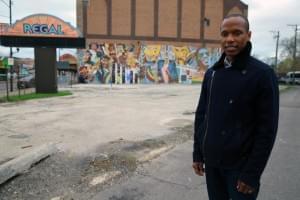
Jerald Gary is the owner of the New Regal Theater. He hopes the theater can be part of a broader revitalization of the area into a cultural destination similar to Beale Street in Memphis, Tennessee.
Chicago artist and urban planner Theaster Gates, who heads up the Rebuild Foundation, bought the property from the city for $1. Then the Rebuild Foundation proceeded to utilize creative fundraising to complete the $4.5 million rehabilitation — doing things like selling “Bank Bonds” made from marble slabs excavated from the bank for $5,000. Gates also sold $50,000 "bonds" for the rehabilitation, and gathered an additional $1.1 million from different fundraisers.
“One thing that was unique about the project from the start was that it was mission and not market-driven,” says Amy Schachman, the director of strategic operations for the Rebuild Foundation. “The restoration was artist-led, and Theaster’s unique vision for the future of the building, and the neighborhood around it, was ultimately able to attract a more diverse set of funders and stakeholders than most projects of this scale.”
Schachman says that rehabilitation projects like this can succeed in low-income areas, as long as the community is involved from the start. “By investing in the community — providing vocational training in the building trades to neighbors — there was local buy-in from the start,” Schachman says. “The restoration and the ongoing activation of the site remains a massive undertaking, but it’s one that definitely can be replicated. It’s proof positive of the power of art, culture and community to drive neighborhood revitalization.”
Higginbotham agrees that community buy-in is key to the redevelopment of historic structures in low-income areas. “The biggest thing I see is a lot of times people sit back and talk about what they want to see happen, but they’re waiting on somebody else — usually a municipality, or state government or something along those lines — to do it for them. And at the end of the day, I think people really have to take responsibility for their own neighborhoods and their own areas. And if there’s something that you want to see happen, then you need to go out and make it happen.”
Successful rehabilitation efforts, like the Stony Island Arts Bank, offer more than just history to their surrounding communities. “The older building has to be relevant,” says architect Kindelin. “It has to say, ‘I’m important because of my history, but I’m important because I continue to be relevant.’”
In addition to inventive fundraising, preservationists say that creative re-use plans are imperative for historic buildings in low-income areas. “I think that even in a tough neighborhood or Barrington, which has several historic buildings, it takes a creative understanding of an old building,” Kindelin adds. “It has to have a creative approach and mindset to match it with a program that the community can rally around.”
For Gary, that creative idea involves not only rehabbing the New Regal Theater that he bought for $100,000, but also creating an arts and technology corridor in the surrounding neighborhood on 79th Street near Stony Island Avenue.
“Our ultimate goal is to create a Beale Street aesthetic around the New Regal that can provide performing arts education as well as culture for the community to partake in,” Gary says, referring to the entertainment district in Memphis, Tennessee.
“I think that’s ultimately the key for historic rehabilitation in this area — we need to become a destination area and not just an entity operating unto itself.”
Illinois Issues is in-depth reporting and analysis that takes you beyond the headlines to provide a deeper understanding of our state. Illinois Issues is produced by NPR Illinois in Springfield.
Links
- Illinois Issues: Still Paying For Justice
- Illinois Issues: The Impasse And The Damage Done
- Illinois Issues: Saving Lives In The Fight Against Heroin
- Illinois Issues: Chicago Mayors Have History Of Axing Top Cops Instead Of Cleaning Up System
- Illinois Issues: Budget Impasse May Prove Setback To Governor’s Prison Reduction Goal

